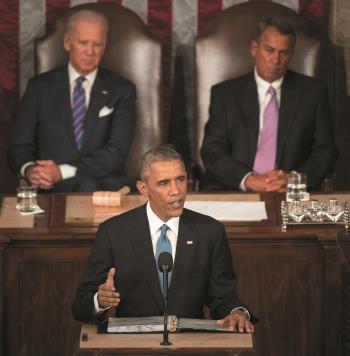
New Spotlight on Personalized Medicine
First Congress, and now President Obama, have underscored their interest in advancing personalized medicine in 2015. Most recently, Obama announced a precision medicine initiative during his State of the Union speech. Although he shared few details, Obama emphasized personalized medicine within the context of the country needing to advance in science, technology, research, and development.
“I want the country that eliminated polio and mapped the human genome to lead a new era of medicine—one that delivers the right treatment at the right time,” Obama said.
In a White House blog post on January 21, Jo Handelsman, White House Office of Science and Technology associate director for science, noted that for some cancers, patients now are routinely undergoing DNA testing to enable physicians to select the best treatments. “The potential for precision medicine to improve care and produce new treatments has only begun to be tapped. Translating initial successes to a larger scale will require a coordinated and sustained national effort,” Handelsman wrote. “The time to begin that effort is now.”
In Congress, a program called 21st Century Cures, launched last year by the House of Representatives Energy and Commerce Committee, continues to bring attention to promoting innovation in laboratory medicine. The Energy and Commerce Committee also oversees the Food and Drug Administration (FDA), and has held hearings examining FDA’s proposed oversight of laboratory developed tests.
HHS Sets Timeline for Value Versus Volume-Based Reimbursement
Health and Human Services (HHS) Secretary Sylvia Burwell announced specific goals and a timeline to move the Medicare program toward paying providers based on the quality, rather than the quantity of care they provide patients. The first set of goals focuses on pushing alternative payment models, such as Accountable Care Organizations (ACOs) and bundled payment arrangements. HHS has set a goal of tying 30% of fee-for-service Medicare payments to quality or value through alternative payment models by the end of 2016, and tying 50% of payments to these models by the end of 2018.
Overall, HHS has set a goal of tying 85% of all traditional Medicare payments to quality or value by 2016 and 90% by 2018 through programs such as the hospital value based purchasing and the hospital readmissions reduction programs. This is the first time in the history of the Medicare program that HHS has set explicit goals for alternative payment models and value-based payments.
Burwell penned a perspectives piece about the new goals in the New England Journal of Medicine, outlining three core strategies: offering financial incentives for providers, improving care through integration and collaboration, and continuing the drive for electronic health records (N Engl J Med 2015;doi:10.1056/NEJMp1500445).
Federal Deficit Still Shrinking
The Congressional Budget Office (CBO) released a report on the economic outlook for 2015–2025 that projects the federal budget deficit will shrink to its lowest level since President Obama took office. After falling sharply during the past few years, CBO projects the deficit to hold steady relative to the size of the economy through 2018. The report estimates that the deficit for this fiscal year will amount to $468 billion, slightly less than in 2014. At 2.6% of gross domestic product, this year’s deficit is projected to be the smallest relative to the nation’s output since 2007.
The report also notes a projected 14% decline in the number of U.S. residents without health insurance in 2015, mostly due to the Affordable Care Act (ACA). This leads to more spending. Federal spending on Medicare and other healthcare programs reached $831 billion in 2014, 8.3% more than the total for such spending in 2013. The largest increase was for Medicaid outlays, which grew last year by $36 billion, or about 14%, mostly due to states’ expansion of Medicaid eligibility under the ACA.
Beyond 2018, however, CBO maintained its long-term prediction that the gap between spending and revenues will grow, increasing federal debt relative to the size of the economy.